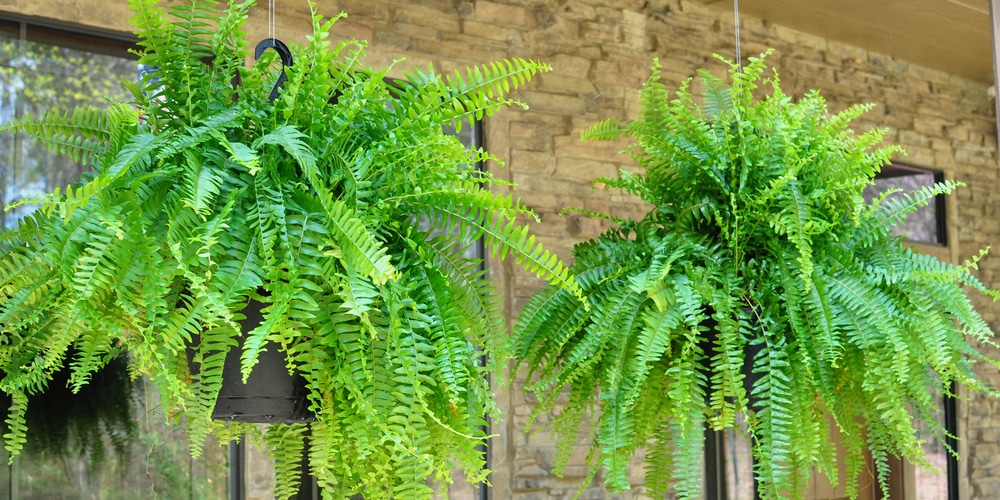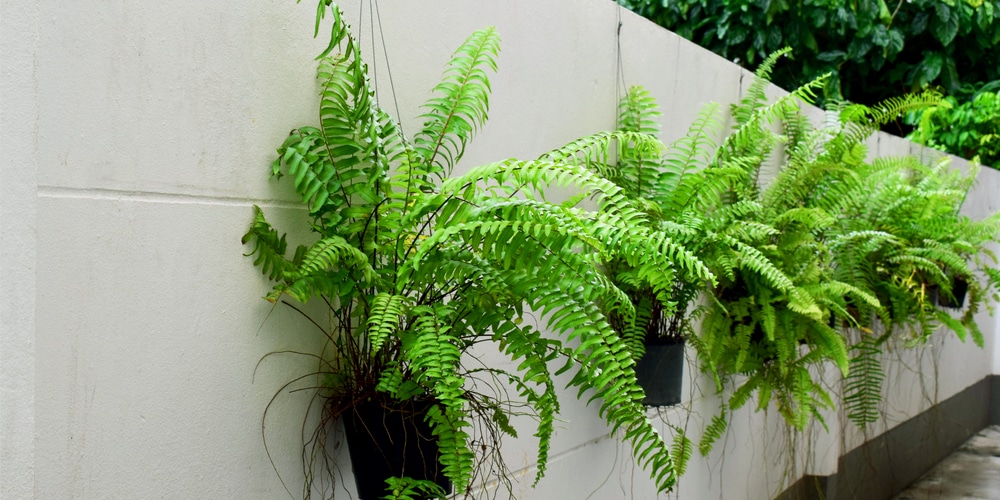Having plants in hanging baskets is an aesthetic choice that can make your house look like a jungle. If you like indoor design, you may have noticed ferns’ popularity as indoor plants. These green and stunning plants display lush foliage that can make any house look more charming.
What makes ferns an ideal choice is that they thrive in various conditions and come in different shapes and sizes: you can choose the type that suits your taste better! However, watering can be tricky, especially when your plant is not in a traditional pot.
If you are wondering: “how often do you water ferns in hanging baskets,” you’ve come to the right place to answer your question. Here, we included some tips to keep healthy ferns at home: watering is crucial.
How Often Do you Water Ferns in Hanging Baskets?
Ferns can thrive in low light conditions but need moist soil. While you can grow them in any container, you have to make sure you water them regularly to prevent them from drying. A hanging basket will probably provide the plant with little soil and space. While that won’t halt its growth, the limited conditions will make the environment dry quickly. Ensure you follow a regular watering schedule. You may have to check with the requirements of the type of fern you are growing to ensure you are taking proper measures.
In general, ferns do best far from direct sunlight. You can put pretty much everywhere indoors, provided they are far from wind or other sources of air. Indeed, ferns like humid environments. You can place your hanging pots in the bathroom (given its low light and humidity) to add a splash of color to the room. If you prefer putting your fern in the kitchen or living room, you will have to spray its leaves with water from time to time to increase the moisture content. Avoid placing your hanging basket near a door, window, under a vent, or close to the air conditioning system.
On hot days, water your fern once every two days. Increase the frequency if you live in a warm and dry area. Apply water until it flows out of the bottom. Avoid letting the soil dry, as it may be hard to reverse symptoms of underwatering. Talking about issues with watering, you may want to keep an eye out for problems resulting from too much or too little water. Jump to the next section to learn how to recognize what your fern might be telling you.
Underwatered or Overwatered Hanging Ferns?
Learning to recognize a plant’s symptoms is crucial to keep it healthy and thriving. Because of the limits given by hanging pots, it is easy to water your plants too much or too little and cause them to die. If you notice your fern seems unhappy, look at its leaves.
Brown and crispy leaves are a symptom of underwatering. You may have to increase the frequency or move your plants to a more humid environment. Yellowy and wilted leaves that feel soft and soggy indicate overwatering. If you are still unsure, feel the soil with your fingers. If it’s dry, you have provided your plant with too little water.
The choice of the potting mix is crucial to prevent your ferns from suffering from water issues. Place your hanging plants in a well-drained mix. Check for your variety’s pH requirements: some plants prefer acidic soils, while others need an alkaline medium to survive. You can make your potting mix by using two parts of compost, two parts of moss, and one part of vermiculite. These ingredients will increase water retention and ensure adequate absorption.
How Often Do you Water Ferns in Hanging Baskets?: The Bottom Line
Having hanging ferns around your house can add character to your interiors. However, you must ensure you place them in an adequate container with drainage holes.
Don’t forget to water your plant often and spray it from time to time to increase the humidity around it. While terracotta pots are a good choice, plastic containers will do fine, provided that the holes at the base are large enough to ensure proper drainage. Apply water at room temperature from the top to avoid causing shock to the roots.

